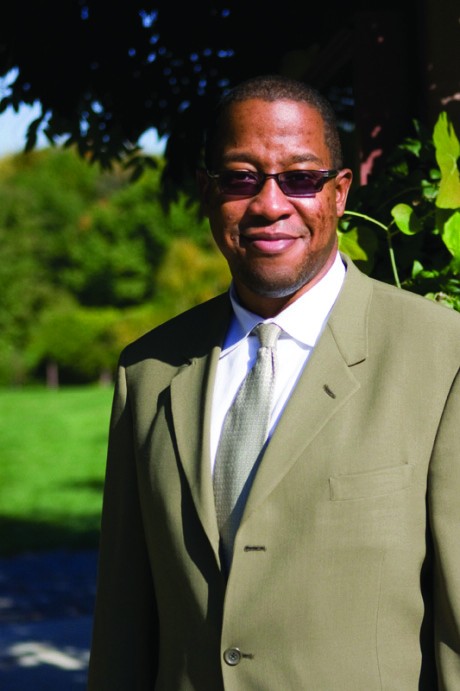No changes coming at GV from Affirmative Action

GVL / Archive Assistant Vice President for Affirmative Action Dwight Hamilton
Dec 2, 2012
Grand Valley State University will not change its admissions process in the wake of the recent federal appellate court ruling (8-7) to rid the state of the use of affirmative action in college admissions.
The Nov. 15 ruling by the 6th U.S. Circuit Court of Appeals effectively overturned a previous ruling that prohibited colleges and universities from using affirmative action in their admissions process to facilitate the growth a more diverse student body. The ruling was passed on the grounds that universities cannot disenfranchise the minority population by putting their rights up to a majority vote.
“What that did was it overturned the ballot initiative and basically stated that the amending of the State Constitution violated the Federal Constitution, the United States Constitution and the right to equal protection under the Fourteenth Amendment,” said Dwight Hamilton, assistant vice president for affirmative action at GVSU. “…Basically what they said was the way that the ballot initiative operated, it essentially disenfranchises the minority population and they based it on U.S. Supreme Court precedent.”
Although there are possible changes coming in the future, GVSU isn’t making any moves yet.
“We are not going to do anything,” Hamilton said. “We are going to continue to operate the same way we did prior to this decision. We are certainly not using race as a preferential consideration for any of our applicants. We are not going to make any changes because the status of affirmative action is still unresolved.”
The overturn of Prop. 2 is followed by another U.S. Supreme Court Case that will challenge the merits of affirmative action, he said, and may completely negate the Nov. 15 ruling.
Hamilton said that affirmative action is about more than just racial equality.
“What affirmative action is, is a targeted, proactive way to address patterns of under representation,” Hamilton said. “In the employment sense and even in the admission sense, it is based upon five different categories that have historically been underrepresented.”
Those underrepresented categories include women, African-Americans, Latinos, Native Americans and Asian Americans.
In 2006, the passing of affirmative action helped students of minority groups receive bonuses when it came to admissions. Hamilton used recruitment as an example.
“Let’s say, ‘we are really going to target students in Chicago, Detroit, Lansing, Flint or what not,’” he said. “That is a form of affirmative action if you are actively searching for people there but you are not exclusively looking for black students or just for Hispanic students or what not but it still is a targeted, directed approach to address patterns of underrepresentation.”
With the signing of Proposal 2, Hamilton said the minority student population plunged after the passing because GVSU was not able to compete with schools from other states who could offer students more money.
According to data from GVSU’s Office of Institutional Analysis, 2005 numbers reported that 5.1 percent of the student body was black, 2.7 percent was Asian, 2.8 percent was Hispanic and 87.1 percent was white.
Following changes in affirmative action, GVSU has seen a slight increase across the board in 2012, including the white population. Latest numbers report that the student body is 6.9 percent black, 4.3 percent Hispanic, 3.1 percent Asain and 91 percent white in 2012.
In order to combat the plunge in minority numbers, GVSU has added a number of new approaches to recruiting a more diverse student base, using race-neutral demographics to help boost minority enrollment numbers.
“What we have done is we have focused on recruiting first-generation students and that is race-neutral but disproportionately first generation college students tend to come from underrepresented groups,” Hamilton said. “We have recruited in areas, urban areas, again race-neutral but typically are higher represented by underrepresented groups.”
Attorney General Bill Schuette plans to appeal the ruling of the Michigan Constitution known as the Michigan Civil Rights Initiative through a formal request with the U.S. Court of Appeals.
“MCRI embodies the fundamental premise of what America is all about: Equal opportunity under the law,” Schuette said. “Entrance to our great universities must be must be based upon merit, and I will continue the fight for equality, fairness and the law.”
Even with everything still up in the air, GVSU is committed to providing equal opportunities for all of its students.
“Grand Valley still has a commitment to diversity,” Hamilton said. “We were pleased to see the decision on the Sixth Circuit Court but again we are not planning on making any changes. We are still looking at the issue as it develops in the Supreme Court.”
[email protected]
Ethnic Make-Up at GVSU
2005-06
White: 87.1 percent
Asian: 2.7 percent
Black: 5.1 percent
Hispanic: 2.8 percent
Indian: 0.6 percent
2009-10
White: 86 percent
Asian: 3 percent
Black: 5.3 percent
Hispanic: 3.2 percent
Indian: 0.6 percent
2012-12
White: 91 percent
Asian: 3.1 percent
Black: 6.9 percent
Hispanic: 4.3 percent
Indian: 1.5 percent
*Information from GVSU’s Office of Institutional Analysis
**contains race duplicity

























